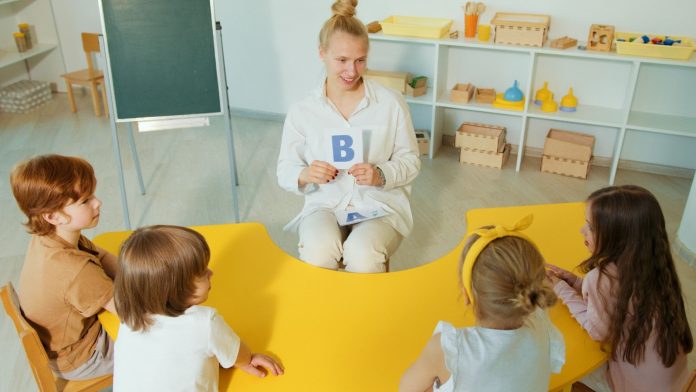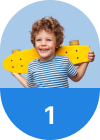- 1. Singing Them Alphabet Songs
- 2. Letter Matching Games
- 3. Alphabet Boxes
- 4. Use Letters as Means of Interdisciplinary Learning
- 5. Flashcards
- 6. Indulge in Making Foods Shaped Like Letters To Learn Faster
- 7. Reading Alphabet Books
- 8. Sensory Activities
- 9. Teach Kids the Letters in Their Names
- 10. Keep track of Your Kid’s Growth
Alphabets form the core foundation for kids to learn about words and stories and acquire knowledge about the world around them. Hence, teaching the alphabet to the kids is the first step to introducing them to the world of language and vocabulary.
As parents, we are often worried about how to begin teaching the alphabet to preschoolers in a manner they understand. This teaching plan for kids should start at home before your kids head to kindergarten and school. This article has compiled ten easy and proven fun ways to teach the alphabet to your kids.
We will also discuss letter recognition and the advantages of learning alphabets for kids, so you have nothing to worry about! You can also use letter name games for kids in the process.
10 Ways You Can Teach the Alphabet to Your Kids
1. Singing Them Alphabet Songs
Kids love listening to music and will catch the rhythm soon. If you play some children’s songs, they will be humming the song all day! Therefore, a great way to introduce your kids to the alphabet is by singing alphabet songs with them.
SplashLearn: Most Comprehensive Learning Program for PreK-5

SplashLearn inspires lifelong curiosity with its game-based PreK-5 learning program loved by over 40 million children. With over 4,000 fun games and activities, it’s the perfect balance of learning and play for your little one.
Try for freeWe are all acquainted with the famous “A, B, C, D…” song, but there are several other alphabet songs on YouTube that you can play for your kids. These songs have visuals with letters for your kids that will promote visual learning too.
Related Reading: How to Get Best Results While Teaching Phonics to Kids at Home – A Step By Step Guide
2. Letter Matching Games
Letter Matching Games can be a great way to familiarize your kids with the alphabet. You can have a large poster board in the living room where you can stick letters. Give your child several different letters cut out on paper and ask them to match the letter on the poster board. You can pick one letter for each day of the week.
You can also have letter magnets on your refrigerator and ask your child to pick out the letters in their names. Configuring how to teach the alphabet is easy when you can figure out fun ways to keep your kid engaged in learning.
3. Alphabet Boxes
Making the alphabet learning process fun and exciting will keep your child on their toes to learn new words. By creating alphabet boxes, you can help your child discover newer objects and toys related to the alphabet.
For example, you can choose the letter ‘C’ for a particular week and curate a box full of crayons, color pencils, carrots, and so on. As you show them the different objects that begin with the letter ‘C, they begin to remember them and the associated letter.
Once they are acquainted with all 26 letters, you can ask them to guess the letter from the box’s contents. This can be a fun way to teach the alphabet and keep your child excited to explore more boxes.
4. Use Letters as Means of Interdisciplinary Learning
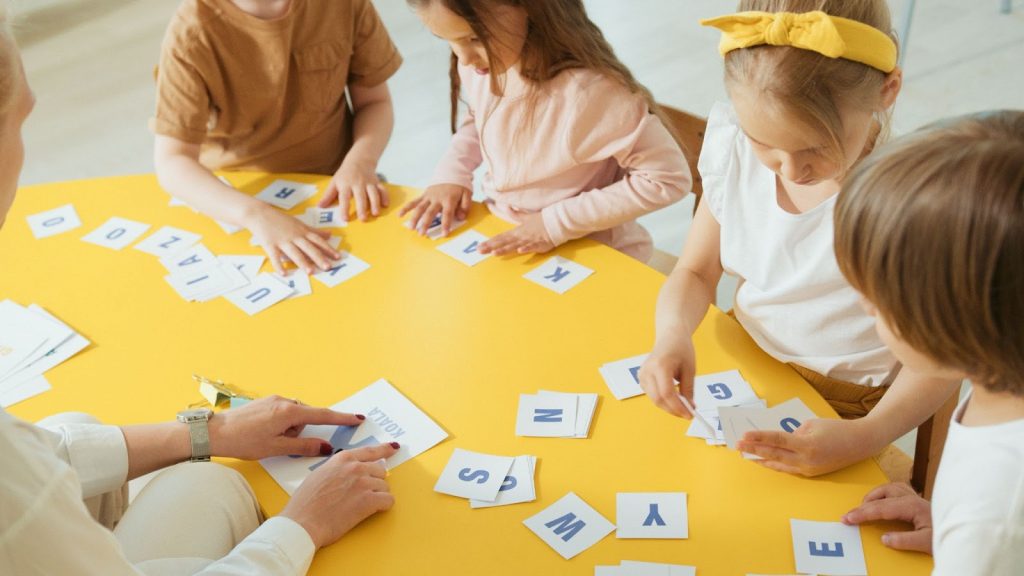
While learning the alphabet can get boring if you are simply reading the same letter to your kid, a great way to stimulate the letter-learning process is using letters for other exciting activities or interdisciplinary learning.
For example, if you teach the letter “H,” you can teach them about the virtues of honor and humbleness. You can ask them to name an object with the letter ‘h,’ a food that starts with ‘H,’ and so on. This method of teaching letters to preschoolers is interactive, and kids never lose interest in the whole process.
5. Flashcards
Flashcards are a great way to help kids memorize the alphabet. They come with pictures so that children can associate the letter with an object that starts with the same letter. However, some flashcards have images that may have the sound associated with the letter at the start when pronounced but not the actual letter in the spelling.
Use flashcards with objects that start with the same letter displayed on the flash. Anything taught to preschoolers must be specific and simple so they can retain whatever they learn. For early learners, flashcards must be precise.
6. Indulge in Making Foods Shaped Like Letters To Learn Faster
Kids love to eat; hence one of the best ways to teach the alphabet is by giving them food in the shape of letters or arranging baking sessions where children can use letter-shaped cookie cutters for making cookies.
There are cereals shaped like letters, noodles in the shape of letters, and letter-shaped biscuits that can make snacks or mealtime fun. As they eat, they will recognize letters and learn faster. The idea is to push letter recognition throughout the day so that kids can easily learn the letters over time.
7. Reading Alphabet Books
Learning about letters from alphabet books is the best and most traditional way to learn the alphabet. With several alphabet books in different colors and captivating graphics, you can introduce your kids early to the alphabet.
Most alphabet books have activities that children can work on to practice the alphabet. If you are wondering how to teach ABCs to your kids, then get your hands on alphabet books as a first step. Eventually, you can introduce them to different activities like the ones mentioned above.
8. Sensory Activities
Kids should be introduced to learning the alphabet in a way that involves multisensory activities. When kids use different senses to get acquainted with a letter, its shape, and its feel, they tend to remember longer. As children have a smaller span of attention, they can pick things faster by engaging their senses in a learning activity.
Therefore, sandpaper letters are a great way to introduce children to the alphabet. They can run their fingers through the shape of the letter and have a memory of the shape of the alphabet by tracing the sandpaper letters. You can also put up a sand writing tray, where your kids can draw the letters through the sand with their fingers.
9. Teach Kids the Letters in Their Names
Children will hear their names more frequently than any other words since their birth. Therefore, introducing them thoroughly to the letters in their names and their sounds will help them understand how language works and learn the other letters faster.
As their name gives them an identity in this world, they connect to their names better than any other word. Help children become familiar with their names first to facilitate their learning of the other letters in the alphabet series. The faster they learn the letters in their own name, they will be able to memorize the other letters.
10. Keep track of Your Kid’s Growth
While you engage your kid in different activities to learn letters, it is equally important to keep track of their progress. By the end of each week, you can assess how many letters they have learned and the number of words or things associated with those letters they can identify, and give them activities to practice more.
You can engage in art and craft activities with kids who are learning slowly, cut out letters from color papers, and so on, to help them learn eventually and catch up with their peers in preschool.
Now that we have learned how to teach alphabets to preschoolers in a fun way, let’s understand the concept of letter recognition for further clarity on the matter.
Related Reading: Easy Steps to Teach Kids to Read
What Is Letter Recognition?
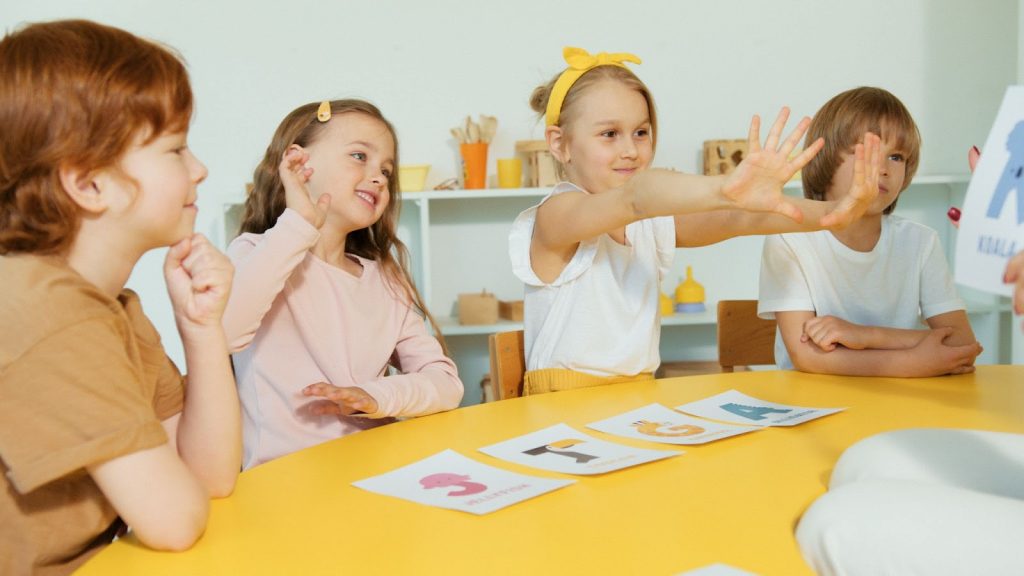
Letter Recognition happens when your child can easily distinguish between all 26 letters in the alphabet and pronounce them clearly. They may be able to sing the ‘ABC song’ or be fluent with the first few letters in the alphabet, but when they can randomly recognize the letters and pronounce them individually, they have started recognizing the letters.
By asking them random questions about the letter a particular word starts with or pointing out writing and asking them to read out the letters word by word, you can ensure whether your kid can do fluent letter recognition. This is a brilliant way of teaching the alphabet to kids.
Let’s explore why learning the letter names is so important for kids.
What Are the Advantages of Learning Letter Names?
Children should be familiar with each letter name as it automatically helps them associate a letter faster in their mind and eventually become fluent in reading in their early school years. Now let’s look at the advantages of learning letter names:
- When children practice letter names, they tend to remember the sound of each letter easily.
- Children automatically learn to read better when they are familiar with the sound of each letter. It augments their pronunciation.
- As they learn letter names, they are excited to explore more letters and the words formed with those letters.
Parents often stay in a dilemma about whether they should begin with uppercase letters or lowercase letters. While learning both is crucial to be swift with the language, it is important to know the order in which you can introduce your kid to uppercase and lowercase letters.
Related Reading: Ways to Build Pre-Reading Skills in Kids
Should Uppercase or Lowercase Letters Be Taught First?
Although children need to be fluent with both uppercase and lowercase letters before they begin to read and write, it is advisable that parents start with uppercase letters as they are more distinct and easier to remember.
Moreover, in upper case letters, only M and W can be flipped or prone to confusion; the rest are distinct. Several letters can be flipped in lowercase, such as b/d, b/p, p/q/ d/p, and n/u. Be it horizontally or vertically; children can easily flip and mistake these letters. Hence it is better to start with upper-case letters that are more precise and distinguishable.
Eventually, once your kid starts recognizing the uppercase letters, you can introduce them to lowercase letters one by one.
Last but not least, it is crucial to keep track of which letters the child knows!
Keep Track of the Letters Your Child Learns!
While you configure how to teach a child to memorize the alphabet, keep track of your child’s progress, as mentioned above. A key to scaling their progress is finishing all the letters in the alphabet each time you begin. This way, they can try to memorize the letters as much as possible, and before you know it, they will be fluent with the alphabet in an orderly manner.
Related Reading: Best Reading Websites For Kids
Teach Your Kids Alphabets the Right Way!
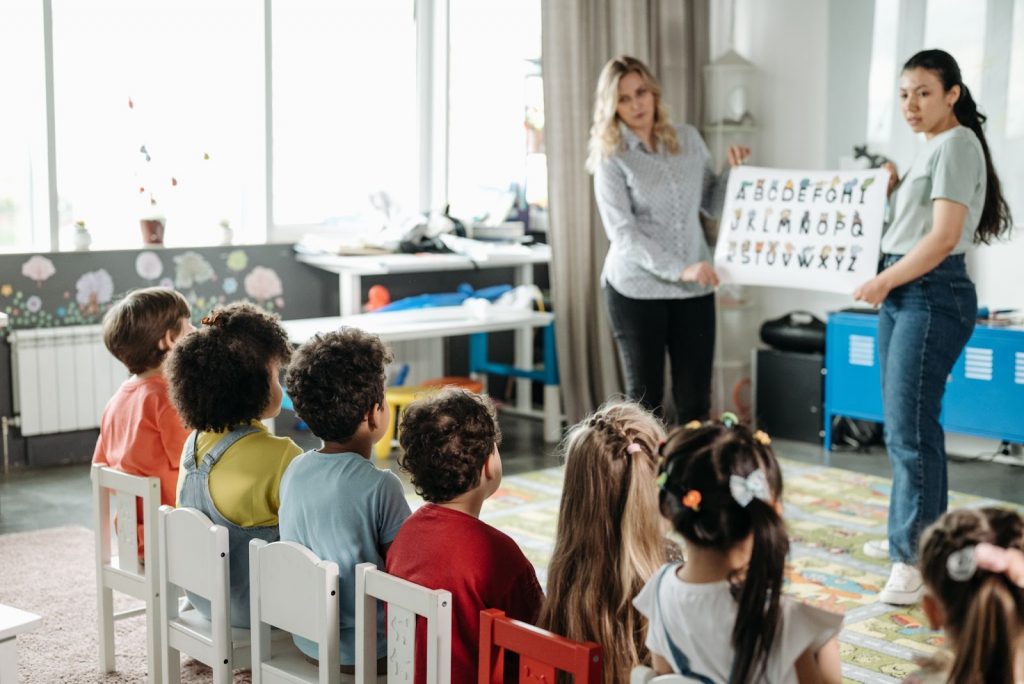
Teaching alphabet letters is a continuous process and must be subtly incorporated into daily activities to help your kids become acquainted with each letter. By keeping letter magnets in the fridge, letter-shaped chocolates, or cereals, you can create a visual memory for your kids in their everyday life and eventually help them become acquainted with the sound and shape of each alphabet.
As the alphabet forms the core foundation of one’s strength in language, but instilling the activities mentioned in this blog and using simple reading techniques, you can excel in teaching the alphabet to kids.
Frequently Asked Questions (FAQs)
At what age should I introduce letters to my kids?
You can introduce your kids to the alphabet through ABC songs and alphabet games when they are two years old.
What are the four ways a teacher can teach the alphabet to kids of all ages?
The four ways teachers can teach the alphabet to kids of all ages are:
- Repeating each alphabet through conversations, dialogs, and stories.
- Allowing children to participate in physical activities that help them learn letters, such as looking for hidden letters across the room.
- Making the alphabet learning method fun and creative
By the age of 5, how many letters should my child recognize?
By age 5, children should be able to recognize the first 15-16 letters, including the letters in their names.
What are alphabet skills?
Alphabet skill involves knowing how to recognize, write, read and identify the letter sounds in the English alphabet.
What is the most important aspect of alphabet recognition?
The most important aspect of alphabet recognition is that children must be familiar with the sound of each letter. This helps them remember the letters thoroughly.


